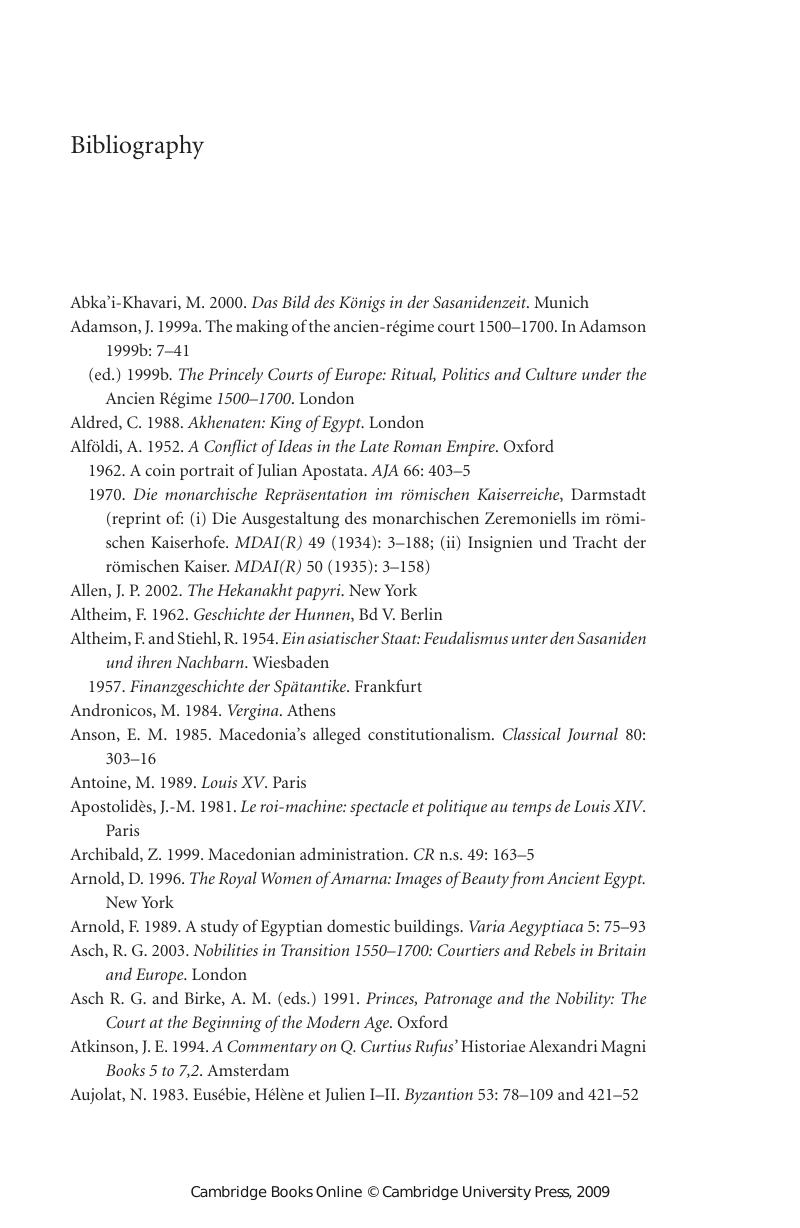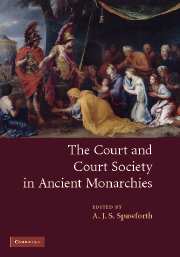Book contents
- Frontmatter
- Contents
- List of figures
- List of tables
- Notes on contributors
- Acknowledgements
- List of abbreviations
- Introduction
- 1 New out of old? Court and court ceremonies in Achaemenid Persia
- 2 King, court and royal representation in the Sasanian empire
- 3 The court of Alexander the Great between Europe and Asia
- 4 Friends in high places: the creation of the court of the Roman emperor
- 5 The imperial court of the late Roman empire, C. AD 300–C. AD 450
- 6 The imperial court in Han China
- 7 Court and palace in ancient Egypt: the Amarna period and later Eighteenth Dynasty
- Bibliography
- Index
- References
Bibliography
Published online by Cambridge University Press: 22 September 2009
- Frontmatter
- Contents
- List of figures
- List of tables
- Notes on contributors
- Acknowledgements
- List of abbreviations
- Introduction
- 1 New out of old? Court and court ceremonies in Achaemenid Persia
- 2 King, court and royal representation in the Sasanian empire
- 3 The court of Alexander the Great between Europe and Asia
- 4 Friends in high places: the creation of the court of the Roman emperor
- 5 The imperial court of the late Roman empire, C. AD 300–C. AD 450
- 6 The imperial court in Han China
- 7 Court and palace in ancient Egypt: the Amarna period and later Eighteenth Dynasty
- Bibliography
- Index
- References
Summary

- Type
- Chapter
- Information
- The Court and Court Society in Ancient Monarchies , pp. 329 - 353Publisher: Cambridge University PressPrint publication year: 2007



